SHARED ARTICLES AND REFLECTIONS (continued)
please scroll down to read earlier articles
Oblates meeting (2018) a personal review
by Judy Siqueira
For the first time I was the first to arrive in Shantivanam
well before the meeting started and with another member the last
to leave a day after the meeting ended. Though I have been for at
least four meetings over a period of about 17 years I have always
arrived just on time and left immediately after the meeting. This
was not due to any choice, just circumstantial, but this time also
a happy stance, in fact many happy stances.
Meeting Fr. Dorathick in his office at his initiative I said that
something had changed in Shantivanam. His response, only the
position of the table in his office had changed and nothing else.
Since I had arrived only the previous evening I was unaware of the
vibs I was picking up but knew that it was nothing physical.
Later I realized that a principle of his life is love and listen
to people. I guess that these were the vibs I had been picking
up. He remembered me at Swami Abhishiktananda’s birth centenary
celebrations in 2010. He was a novice then. I do not remember him
then though I do remember that a bunch of novices did the
backstage work for us.
When I came down with a severe cold and cough I had the
opportunity for a lot of love from Fr. Dorathick and some magic
herbal medicines. On the material side the food has been far
better than I have known it to be. One of my experiences is that
in ashrams of Catholic initiative the food is poor in nutrition
and quantity; this has not been my experience in ashrams of Hindu
initiative. Ashrams are not called Catholic or Hindu because
ashram spirituality is the same everywhere; however in ashrams of
Christian initiative Jesus is the guru and the person in charge,
the acharya.
On the faith side I did feel a deepening of relationships with
many. Being the second meeting of the Oblates, having already
met each other personal lives of faith were experienced in small
daily interactions in spite of disagreements. The openness and
inclusiveness of people who just jumped in and took over from what
the coordinator had tentatively done and who could not be present
for the meeting was admirable. I enjoyed the talk on the Jesus
prayer though I will not be able to fully integrate this method
into my personal life, as I have and still strive to integrate non
Christian methods too. Giving a talk on the first chapter of the
thesis, deepened my self confidence as I experienced the response
of the participants. The thesis being on Sannyasa and the first
chapter on cosmogenesis, (its macrophase mode which pertains to
large scale structures such as galaxies and stellar systems)
showed me in a practical way the value of what I was doing. The
day also happened to be Swami Abhishiktananda’s birth anniversary;
hence I am attaching a poem depicting a dream that took place
during his birth centenary celebrations. The present session
coming just before Christmas made Christmas particularly
meaningful to see the numerous ways God is pure gift to all
resulting in a deep peace and joy.
The inspirational, heart throbbing singing and playing of numerous
Indian instruments in a deeply prayerful mode was led by Zen and
Marcos. A little more silence would be welcome, especially after
the singing and music had led to it.
One of the members in a session raised the issue of acute poverty
of innocent children and the apparent blindness of God to it. In
Sr. Valsa and her troupe of poor children an answer to this issue
was given through a beautiful dance recital. The children, the
hope of the future, were being trained to perform classical and
folk dances of Tamil Nadu. They also had to be disciplined and
committed. They had left home at 5 a.m. that day, would reach home
at 2 a. m. the following morn for a school exam that day. They
receive their entitlements for human growth through us. God works
through humans. Humans co create with God in building the
kin-dom. Evil comes from humans. Humans make their choices.
The closing session too was emotive and compassion evoking. A
thali with the light in the centre and decorated with flower
petals and leaves from the compound was passed around as each one
holding it said a spontaneous prayer of gratitude in the context
of what had touched him/her deeply.
A Dream
At Shantivanam 2010
by Judy Siqueira
Celebrating the birth centenary of Swami Abhishiktananda
Waking up one morning
Instinctly remembering a dream---
A giant of a man is chasing me
I run away my fastest
He wants to rape me.
A couple of times I look over my shoulder
Wonder
Why isn’t this man catching me?
He can do so with one grip.
Why is he allowing me to run away from him?
Wondering too—
He will catch up with me
And I will not run away from him
Yet I continue to run my fastest away from him.
Waking up at 5am the next morning
Immediately remembering my dream
I knew the man is God
Forcing myself to act on it
Vipassana being most accessible
My journey into it began.
However,
Sharing the above in the Dec 7th session 2018
I come to realize
this dream is far from over--
I have not surrendered to the extent God wants,
Non dual living.
Hence,
a bout of cervical spondylosis
branching from the root of dualistic living;
Cervical spondylosis now
far far less.
God a gallant lover.
For more sharing by Judy Siqueira please scroll down
ROLAND ROPERS SHARES THE FOLLOWING ARTICLES AND PHOTOS:-
Vacation is the most precious and permanently available gift at no costs, but a great risk, the risk to touch unknown territory: the VOID, where emptiness becomes fullness and fullness becomes emptiness.
Happy are those who know how to experience everlasting vacation, the castle of emptiness where our original being is at home. I have the great pleasure to add a new and apparently very logic word to the existing English and American dictionaries:
lightful (full of light).
The English word delightful is misinterpreted as pleasant, charming and does not represent the light precisely enough. When we say: I am delighted, it should mean: I am full of light, but we understand thereby: I am highly pleased.
Light is reflected on a wall. Why should we venerate or revere the wall? Real worship means to be attentive to the light.
All human beings who risk to walk on a very challenging path and embrace through their experience and love many hearts around the globe are lightful. My tribute here is focussed on Vacation, the Emptiness, the Void, Sunyata -- the indwelling place which becomes lightful at the moment of experiencing the no-thingness.
Vacation is totally misunderstood as a period off from work and daily duties into a new venture of sensations. The word vacation is etymologically rooted in the Latin verb: vacare = to get emptied, to be freed, to become free from obsessions. Vacancy, to vacate, vacuum; all these words primarily deal with cleansing and emptying.
Vacation could be absolutely free of any charges and costs if we knew how to enjoy real vacation.
But too many are horrified by a vacating, emptying process which we call in Latin: horror vacui. If we avoid something, we try to circumpass the Void, the Sanctuary of Emptiness, our Original Home, our Divine Source of Being. Holidays, Holy Days and Vacation have been used as places to escape from ourselves, and thus the distance between the location of our sensations and our inner centre gets longer and longer. In Buddhist teaching we learn to take refuge in the Buddha and in the Sangha (the community). A true Christian must understand and know, that the Kingdom of God is within yourself, at the present moment, here and now.
There is no reason to escape from myself which at the same means to become absent from GOD´s presence.
The spiritual master will not attract anybody by tempting offers for sensational holidays and experiences. He will only invoke in his disciple`s heart the eager longing for Returning Home, for attaining Nirvana, for touching and tasting the Void.
Contemplation, the non-active activity, the non-thinking awareness, the vacant room without any objects, leads us into the Void, the healing emptiness, Sunyata (Sanskrit).
Contemplation (Latin: contemplatio; Greek: theoria) is totally different from meditation which is a reflective activity on the way to the inner centre. The Greek verb theorein means to look into the essence of being, to see with the eyes of the heart, beyond reasoning and focusing on any object. Contemplation and theory do correspond with the Japanese Buddhist term of kensho, the experience of enlightment.
The intense inner wakefulness, the state of non-judgment and non-discursive thinking, will eventually result in Brahmavidya (the knowing of Brahman). Brahmavidya and conventional science both begin when a person finds that the world of sensual impressions, so transient and superficial, is not enough in itself to satisfy the desire for meaning. Then one begins to stand back a little from the senses and look below the surface show of life in search of underlying connections. But the sages of the Upanishads wanted more than explanations of the outside world. In the Brihadaranyaka Upanishad there is a long haunting exposition of the states of mind the sages explored. They called them waking, dreaming and dreamless sleep, but somehow they had made the brilliant observation that these are not merely alternate states which a person slips in and out every day. They also represent layers of awareness, concurrent strata lying at different depths in the conscious and unconscious mind.
In dreaming, the Upanishads observes, we leave one world and enter another. Everyone experiences this, but no one knows the experiencer. What is the same in both worlds, the observer both of waking experience and of dreams? It cannot be the body, for in dreams it detaches itself from the body and senses and creates its own experiences – experiences which can be as real, in terms of physiological reactions, as those of waking life. Dream and waking are made of the same stuff, and as far as the nervous system is concerned, both kinds of experience are real.
The sages said:
In dreamless sleep, the observing self detaches itself not only from the body but from the mind.
Since the indepth castle of any human and/or sentient being is empty, there is no place for dreams anymore. In dreamless sleep and in deep contemplation the mind settles down to rest and in this state the autonomic nervous system is repaired. This still world – the silence beyond the silence – is always present in the deepest, most universal layer of the unconscious.
„Be still and know that I am GOD!“
(Psalm 46,10)
The Latin Vulgata, where the Psalms have a different order, says relating to Psalm 46,10 in Psalm 45,11:
„Vacate et videte quoniam ego sum Deus“,
which means literally: „Become empty but see, that I am GOD“.
The imperative form „vacate“ is the clear invitation to become vacant, empty.
The German translation does not correspond to the original meaning, it says in Psalm 46,10: „Lasst ab und erkennt, dass ich Gott bin.“
(Stop your activities and know that I am GOD).
In the Upanishads the fullness is called Sat: pure being, in which all of creation is implicit as an organism is implicit in the DNA, or a tree in a tiny seed. The joy of this state cannot be described. This is Ananda: pure, limitless, unconditioned joy, which Dom Bede Griffiths (1906 – 1993) represented so authentically through his being. „There is no joy in the finite; there is joy only in the infinite.“
That is the message of the Upanishads. The infinite – free, unbounded, full of joy – is our native state. We have fallen from that state and seek it everywhere: every human activity is an attempt to fill this void. But as long as we try to fill it from outside ourselves, we are making demands on life which life cannot fulfil. Finite things can never appease an infinite hunger. Nothing can satisfy us but the re-union with our Real Self, Divine Source, Original Being.
We are called to rediscover the deepest realm within ourselves which is our native state. Dom Bede Griffiths often recited his beloved passage from the Chandogya-Upanishad:
„In the castle of Brahman is a secret dwelling,
the lotus of the heart.
Within this dwelling is a space,
and within that space is the fulfilment of our desires...
Never fear that old age will invade that castle;
never fear that this inner treasure of all reality
will wither and decay.
This knows no aging when the body ages;
this knows no dying when the bodies dies.“
Kultur- & Sprachphilosoph
Coaching for Inner Universe Wisdom
A unique book of universal wisdom: "MEDITATIONS on the TAROT" (680 pages)
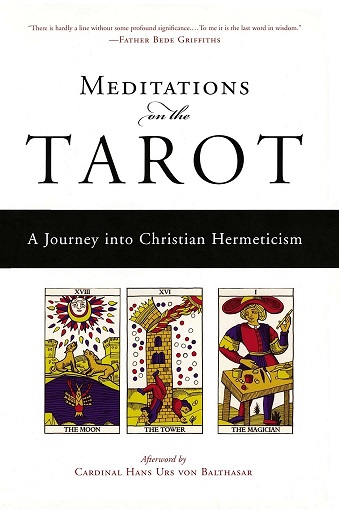
BUDDHA's MIRACLE in the presence of Dom BEDE GRIFFITHS - Rottach-Egern/Upper Bavaria 7th October 1991
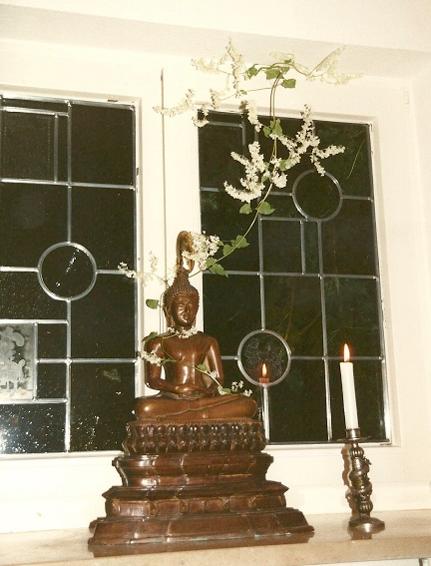
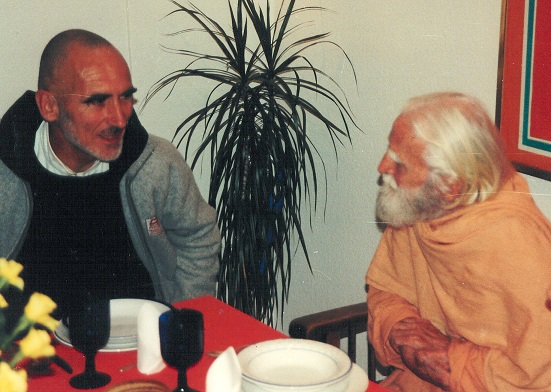
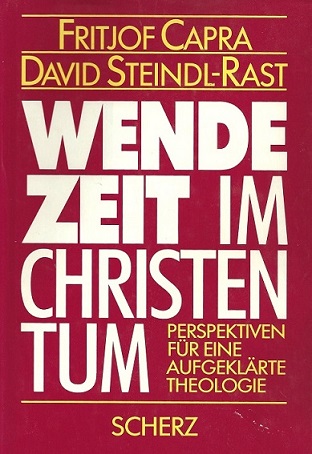
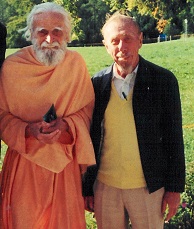
above photo - Kreuth, October 1991 - Bede Griffiths (85 yrs.) & Michael Windey (70 yrs.)
The Path of Watchfulness - For more sharing by Roland Ropers please click on pdf. files below (article in German)

|
ACHTSAMKEIT Weg in das LEBEN.pdf Size : 4061.919 Kb Type : pdf |
ANGELUS SILESIUS: Christ must be born within yourself
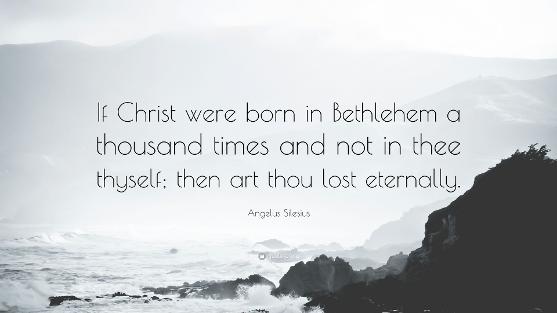
article below in German shared by Roland Ropers

|
SILESIUS Mensch werde wesentlich.pdf Size : 60.114 Kb Type : pdf |
REIGN OF GOD
UNIVERSAL GIFT, UNIVERSAL ANTIDOTE TO FUNDAMENTALISM
Judith Siqueira
I begin this paper The Reign of God with a short story (Prema and Sonia) and a poem (Inside-Outside both written by me) for two reasons. Art is an important medium of communicating ideas and values too deep to communicate without the divisiveness of various social categories like caste, class, religion, gender etc. I focus on living in the Reign of God as an antidote to fundamentalism so rampant in this 21st century due to rapid changes arising from scientific and technological advances and haphazard socio-economic development. 3) All humans are created by God to live and grow in peace and justice. Art brings out our common humanity better than the rational.
PREMA AND SONIA
It was peak summer season and Prema was limp with the heat even though the fans were spinning, the doors shut, the curtains drawn and the air conditioner on low as she was allergic to it. This was Prema’s first free evening in months. She switched on the TV and a few minutes later switched it off. She wandered around the house and switched on the TV again and then the music player and then the DVD.
Prema was a pretty woman, 5’ 3”, slim, wheatish in complexion, with close cropped hair. She had done investigative work on a rape and murder case that had national and political implications. She had pursued it relentlessly for the last six months and was now rewarded with a promotion as editor of the regional news section of the prestigious national The Hindu Daily. And at just 28 years of age! Prema knew that it was more than the heat that was making her feel limp.
Collapsing after a light dinner Prema tossed and turned in bed. Never had she been so restless. As the evening drew to a close tucking herself into bed her phone rang. She ignored it – the persistent ringing -- “what the hell” she screamed and picked it up as she lay sprawled in bed. Her heart started to thud. One could hear the thrill in her voice as she responded. The next moment she was out of bed jumping in glee.
Dawn just breaking she was like a lark warbling as she dressed, breakfasted and drove to work. “Good morning Prema, You look extraordinarily bright this morning”. “Good morning Mr. Pal. Thank you”. And so it was for a good half hour with each of the staff commenting on her glowing appearance. Prema felt the morning swiftly fly and without a glance at her usual lunch buddies, raced to Old Joe’s, once her favourite eatery, secluded and tucked away by greenery on a tiny side road.
On the dot of 1 pm the bells around the eatery chimed. Prema’s heart leaped—there was Sonia standing in front of her. They fell into each others arms laughing and crying at the same time. As they collected themselves and placed their orders, the conversation began to flow.
“So nice to see you, Prema, sweetheart!”
“Aren’t I glad to see you too my darling, darling, Sonia! I can hardly believe we are finally here enjoying steaming South Indian coffee in silver mugs and eating idly sambhar as we did in the good old days”. They spent a good hour and a half reminiscing and laughing as they walked down memory lane. There was Prof. Kulkarni’s boring literature classes to bunk and his drawling voice to imitate sending out peals of laughter among the students who were always hanging out at this favourite joint of theirs. They remembered the cartooning that Sonia did of all that went on in class and at Old Joe’s and how it seemed that the walls would burst with the laughter of the bubbly students. And often it would be Prema strumming her guitar, crooning the latest songs and favourites of these youngsters bursting with life and laughter. They certainly were a pair the college had never seen and was unlikely to see again!!
As they slowed down on the reminiscing Prema asked, “How’s Shayan?”
“Shayan? Shayan’s fine. I meet him every day after work. We finish work at the same time and his office is down the road”.
“You never have time for me though”.
Sonia quickly gave her a hug with a “I do love you Prema. I cannot forget you and the glorious time we had as students”.
Prema ventured, “I see Shayan often on my return from work as I pass his office on my way home”. “Then you know how Shayan is. I’m sure you often stop to chat and even have a cup of tea together”.
Prema was silent. The discomfort continued as Sonia vehemently said, “Oh! That is why he has been late a number of times in meeting me”. In this suddenly overheated atmosphere Prema took the risk of revealing herself most explicitly, “Oh! sweet heart, darling, I do love you very, very much. I’d like to be with you always as we were in college!”. Sonia still reminiscing in the world of girlie love and companionship assured Prema, “I know you love me as you have always done. I remember the picnics we enjoyed in the youth group, even the moon light picnic on the beach at Colva”. Prema not giving up, “We were a pair then, inseparable”. However, she was crestfallen as Sonia said, “that’s where I first met Shayan”. Prema was now wild with anger, “Oh, Shayan! Shayan! Shayan!”. Sonia simply and sweetly stated herself, “I love Shayan”. Prema, not giving up hope, “I love you Sonia, very, very much. I want to spend my life with you”. Sonia rose, kissed Prema warmly and said, “See you soon sweetheart”.
Prema could not move for a good ten minutes. Stunned to near unconsciousness and though unaware of her surroundings she could yet hear old Kulkarni’s boring drawl, “T’is better to have loved and lost than never to have loved at all”. And as Prema started to come around she glimpsed herself solicitous and serious at her favourite hobby in the most cosy corner of her bed room-- poetry writing. And a poem she once wrote came alive in her again--
INSIDE-OUTSIDE
Outside, compound swept, brushwood neatly piled
Inside-- emotions inarticulate, thoughts stumble;
Outside the mali will soon ignite sticks dry, short and long,
Inside old edifices slowly smoulder
as my pen squiggles on paper
my thoughts incoherent, dry, infertile.
Outside the fire crackles
yet
Inside I feel the heat
old habits die hard.
Outside the dry sticks are consumed;
Inside my passion flashes, rages, glows
in efforts to show not tell,
paint images not describe
as we ourselves recreate.
Outside sparrows chirp,
crows caw,
eagles swoop down;
Inside my words sing,
Outside autorickshaws speed, screech,
scooterists dodge and curse,
cyclists sweat,
cars honk;
Inside my words make music.
Outside people are
on foot about their daily chores,
stopping to chat with heavy bags,
or dressed chic to work
youngsters in jeans and swanky tees,
and those
living on the roads,
cooking, eating, sleeping,
naked children play with stray dogs
Inside I wonder whether I am indulging in a luxury--writing!--
though in a hall with only basic physical conveniences
. And recollect lines from Yeats:
“The friends that have it I do wrong
Whenever I remake a song
Should know what issue is at stake,
It is myself that I remake.”
And Eric Fromm
[Wo]man’s main task in life
is to give birth to [her]himself.
Inside in a pensive state
pen in hand, brow puckered, I continue
my struggle
believing that my writing
will help many to birth themselves too
and
in a shared endeavour.
to paint word pictures
recreate ourselves
live as a cocreator
I witness
the ashes of smouldered edifices
sprout tiny green shoots
A few months later Prema answered a phone call. “Hi, Prema sweetheart. We have fixed the date of our wedding and I want you to be my chief bridesmaid and to help me with my wedding preparations.” “I am delighted sweetheart and thank you. I will take my leave at that time to be with you. It is an important time for us all.”
Prema and Sonia are two people in the human race created in the image of God. The end of the story shows that they are growing in this image of God, living genuinely in unity and solidarity with each other in the reign of God, the kin-dom of God. Though God is nowhere explicitly mentioned they live in the kin-dom, persons, children of God.
Humans created in the image of God enjoy a dignity and freedom expressed in the two creation stories of Genesis. Humans share the world with all of creation receiving from the world the necessities of physical, intellectual and affective growth in community, as it progresses. In this environment human personality develops and humans grow in relationships expressing themselves as the image of their Creator.
Being in the image of God implies that human existence is “relational.” Relationships define space, our Paradise. Mutually complementing relations give rise to a dynamic and creative space. The biblical notion of Paradise epitomizes an original state of interrelatedness and harmony in creation, a web of inter relationships as an “ideal space”, where all creatures are in harmonious relationship with one another and with the Creator. Loss of Paradise, loss of “space” leads to a “recreation” and “restoration” of the image of God in us in the person of Jesus the Christ.
This restoration is poetically expressed by Isaiah 11 especially verses 6-9.
The wolf will live with the lamb,
the leopard will lie down with the goat,
the calf and the lion and the yearling[a] together;
and a little child will lead them.
7 The cow will feed with the bear,
their young will lie down together,
and the lion will eat straw like the ox.
8 The infant will play near the cobra’s den,
and the young child will put its hand into the viper’s nest.
9 They will neither harm nor destroy
on all my holy mountain,
for the earth will be filled with the knowledge of the Lord
as the waters cover the sea.
Predatory animals are not extirpated but have their habits and instincts changed, no longer preying on the tamed in domestic service of humans, as peace reigns. Being betrothed to God forever in righteousness and loving kindness (Hosea 2:19), we live and grow in peace, in the image of God, though we groan with creation (Rom 8:19ff) in the birthing pains of building harmonious relationships cocreating the reign of God and this is visible in the above story.
Image and reign of God are vibrant realities, realised in action, movement, growth and relation. Being evolutionary and growth oriented, these realities, inhere in all human life, as they do in that of Prema and Sonia, transcending structural definitions and limitations. They signify the experience of an inner tension between what they are, ideals, and what they are destined to be, realities. They entail two dispositions simultaneously—an aware restlessness of the actual conditions of life and a vision of the future that moves us as also Prema and Sonia towards ever greater realizations.
In the 21st century this vision comes largely from a breakdown of our socio-economic system and the discoveries of modern science, both leading to the personal surrender of dualistic thinking perceptible in Prema and Sonia, and to the next level of progress. Quantum Physics reveals not only intelligent design and an intelligent designer of evolution, but purpose and meaning in the evolution of an universe that is not static and inert, but a living system, a dynamic, complex, psycho-numinous web of inter-dependent relationships that could come only from what Berry, a geologian, calls cosmic moments of grace, and Thomas Fox an original blessing. Tukaram, a Hindu mystic says: “In the deep sea of bliss the waves are of bliss; in the body of bliss every member is of bliss” and the Isa Upanishad, "All this- whatever exists in this changing universe, is pervaded by God."
The discoveries of Quantum Physics and the crisis in modern society are a couple of factors that have led Eckhart Tolle to say that the awakening of consciousness is the next evolutionary step for [hu]mankind resulting in the vocational arousal of a conscious surrender of dualities, leading to human growth in the image of God, of life in the Reign of God injecting an antidote to fundamentalism. Today, it is this growth in conscious living, consciously expanding and deepening knowledge, that changes being and leads to daily actions that build the image of God in each one and the kin-dom in the universe. It is such actions that explain the origin and finality of all creativity as being meaningful human activity dignifying human life, as the relationship of Prema and Sonia reveal. These actions fulfill our search for meaning and permanence at deep levels because they deepen awareness of human identity which cannot happen in a world of fundamentalisms. Hence they build the kin-dom on earth. They are a response to the zeitgeist of our times and a kairological call to bring a spiritual vision of the earth to birth. In this vision development and progress are attained through human work valuing persons for what their work makes them rather than for what they amass. Eric Fromm says, “Man’s main task in life is to give birth to him[her]self,” to be born again and again in the Spirit (John 3:3) to be living from the inside out. This is the divine plan in which all humans participate, growing in the image of God, realising the Reign of God in their personal and social histories like Prema and Sonia, injecting an antidote to fundamentalisms of all kinds.
[1]Sebastian Elavathingal, CMI, “From the Image of God to the kingdom of God. The Church as a Creative Space” Asian Horizons Vol 6 No4 Dec 2012
[2] Ibid
[3] Ibid
[4] A. J. Appasamy, Temple Bells,Readings from Hindu Religious Literature (Calcutta: YMCA Publishing House, year unavailable), 62.
CONTRIBUTIONS FROM ROLAND ROPERS:-
2 great scientists and sages: HANS-PETER DÜRR (1929 - 2014) and RAIMON PANIKKAR (1918 - 2010)
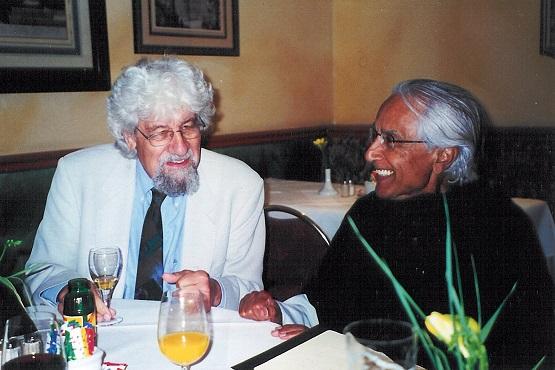
RAIMON PANIKKAR - 100th birthday 3rd November 2018
Raimon’s ingenious thoughts on Christophany
click on pdf. file below

|
PANIKKAR Raimon Christophany and Christology 3. November 2018.pdf Size : 7326.073 Kb Type : pdf |
Carlos Filipe Ximenes Belo - Nobel Peace Prize 1996 - his visit to Munich in October 2001 was not wanted by Cardinal Wetter
The fifth child of Domingos Vaz Filipe and Ermelinda Baptista Filipe, Carlos Filipe Ximenes Belo was born on 3rd February 1948 in the village of Wailakama, near Vemasse, on the north coast o East Timor. He studied in Portugal and Rome philosophy and theology before being ordained a priest of the Salesian Order in 1981.
Shortly after being elected head of the Catholic church in East Timor in 1983, Bishop Carlos Belo openly denounced the brutal Indonesian occupation of the province. When Indonesian troops murdered Timor civilians in Kraras, Belo flouted his submissive image and protested vehemently against Indonesian rule. Because the church was the only institution in Timor able to communicate with the outside world, Belo became the conduit for people's suffering, informing the church and the rest of the world of the actions of the government. After a second massacre in the Santa Cruz cemetary in 1991, the bishop hid a number of fleeing resistance leaders and publicized the events to the world. As a result, he was put under surveillance, was prohibited from travelling, and survived two attempts on his life. In 1996, he and Jose Ramos-Horta received the Nobel Peace Prize "for their work towards a just and peaceful solution to the conflict in East Timor.“
I had met Carlos in November 1989 in Madras (Chennai).
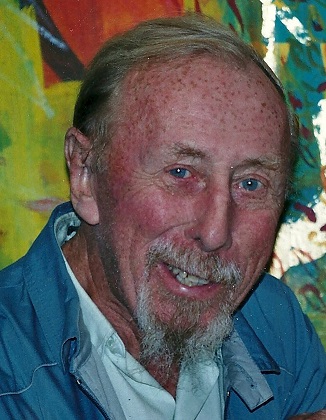
Fr. Michael A. Windey (above photo)
11 October 2018 - Vietnamese ZEN-Master THICH NHÂT HANH will celebrate his 92nd birthday
To read article by Roland Ropers please click on pdf file below:-

|
THICH NHAT HANH 11. October 2001 and 11 October 2018.pdf Size : 2274.153 Kb Type : pdf |
Jesuit Professor Dr. MICHAEL WINDEY (1921 - 2009) about Mahatma Gandhi and Bede Griffiths
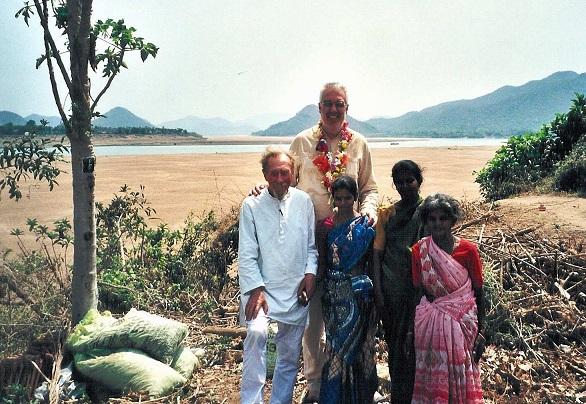
In wealth and war we’ve gone astray
to poverty and peace we lost our way.
We played the dice of stars and chance
but foolishly unlearned to fold our hands.
Behind our plans we hide our fears
and quietly at night we shed our tears
until you come, one silent night
Eternal Dawn of a New Light.
Whoever got in contact with Michael Windey would become his fan. One requires to have a strong heart to sit by his side when he drove a car or a van. Always it was a race against time to keep an appointment, to catch a train or even to catch a plane. Every time he went literally like wind and made it at the last minute. Even after 12 to 15 hours of work in hot sun in the fields and on construction sites, he was as fresh and as energetic as at the beginning of the day. His dictionary did not seem to have the word “rest”. Just as he had no proper sleep, nor proper food either. I have seen him eating a couple of bananas or a few biscuits, if the journey did not allow lunch or dinner. Sometimes he managed with a few glasses of water.
Michael Windey was a pioneer, pursuer and practitioner of development of the poor and the villages in India.
Mahatma Gandhi himself inspired him to do something for the Indian villagers. Michael Windey was awarded the “Gandhi Prize” and in 1992 the International Biographical Centre of Cambridge/England proclaimed that Michael A. Windey was selected International Man of the year 1992-1993 in recognition of his services to Integrated Village Development for 25 years.
In India he was known as “The Messiah of the Poor” and “The Dreamer of the Impossible”.
He was an eternal traveller, permanently on the road or on night trains, always writing instructions, letters, faxes on his very old typewriter.
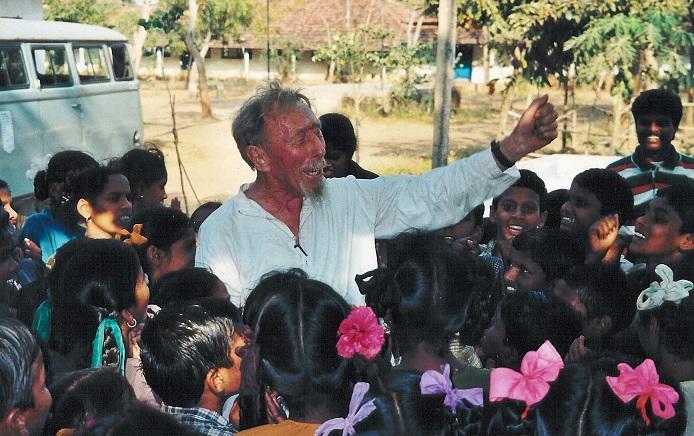
ROLAND R. ROPERS
Kultur- & Sprachphilosoph
Coaching for Inner Universe Wisdom
www.WATCHFUL-WISDOM-WALKING.de
Roland Ropers writes:-
Sri EKNATH EASWARAN - one of the Great Spiritual Sages in the 20th Century
Remarkable is the fact that both Eknath Easwaran and Bede Griffiths had a significant turning point in their lives at the age of 49. Bede Griffiths went in 1955 from the West to the East, Easwaran took the opposite direction in 1959. Both sages were born on December 17th – Eknath Easwaran four years after Bede Griffiths.
ROLAND R. ROPERS
TO READ THE ARTICLE ON EKNATH EASWARAN PLEASE CLICK ON PDF. FILE BELOW:-

|
EASWARAN Eknath Sri Vita updated July 2018.pdf Size : 15005.846 Kb Type : pdf |
Kultur- & Sprachphilosoph
Coaching for Inner Universe Wisdom
Movement for Non-Violence & Spirituality
PLEASE CLICK ON PDF FILE BELOW SHARED BY ROLAND ROPERS:-
The Door of the Heart -Meeting of 3 Spiritual Masters

|
ECKHART Meister The DOOR of the HEART.pdf Size : 201.703 Kb Type : pdf |
I found this article very inspiring which Jill shared on Facebook. Jill has kindly given permission for me to include it here. Tina Goodchild
Bless school by Jill Hemmings
22 December
285 children enjoy their annual fabulous Christmas lunch at Bless school all thanks to the vision of Senthil Kumar.
Senthil grew up in an impoverished village near Shantivanam, the ashram of Fr Bede Griffiths in Tamil Nadu, south India. Senthil was a bright boy with great potential and Bede arranged a sponsor for him so that he could continue his education and train as a teacher.
When Fr Bede died in 1993 Senthil was determined to build a school in his memory and when asked how he would pay for such a vision he replied that God would provide! I confess I was sceptical but Senthil was right and after 10 years of ups and downs he is the very proud head teacher of a truly beautiful school catering for children aged 2 1/2 - 11years old.
The school serves a poor area and fees are on a sliding scale according to the means of the parents. No child is ever turned away. Widows children are free. Senthil has encouraged local women to come and work as helpers and gradually training them up to become teachers and take more responsibilities.
Jayalithas mother is a widow with two children who both attended the school and over the years I have watched her grow from a very depressed woman totally lacking in purpose and confidence to the school administrator! A power house with great authority. Fantastic.
The children are so happy and well behaved. They clearly love and respect Senthil. It's such a joy to be with them. Thank you Senthil for all you do for these beautiful children. You are truly a hero and I admire you so much.
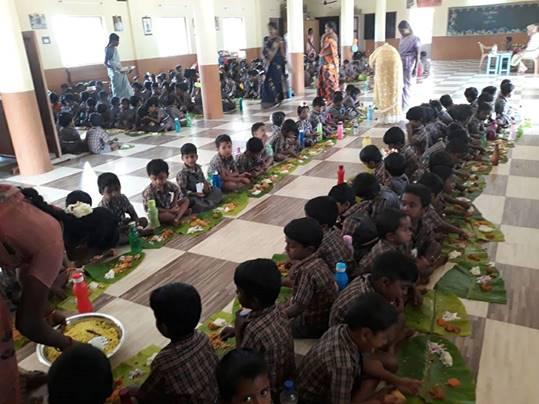
From: Judy Siqueira 7th December 2017
Just returned from sewa in Ahmedabad on a 30 day Vipassana retreat. I
was able to do at least four and a half hours of meditation each day.
Attached are some poems that you may put on the web site.
Vip Sewa Nov 17 A’bad Dhamma Pitha
1 Wed in Vip
Now marital rape.
2 Vip
Taliban Kalashnikov
At my head
3 Colliding, crashing
smashing to smithereens
sound of thoughts
heard
4 Volcanic tsunamic Vip
sculpting new interior forms,
bewildered surrendered sing
Ing the Lords song in strange forms
5 Vip tectonic shifts
innumerable
dancing the Lords song
dangling in love
from a ladder
hanging in love
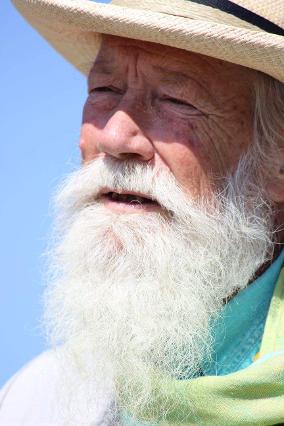
From Maarten Turkstra (Brother John)
This account includes talks between Fr. Bede and Maarten after his pilgrimage to Mount Kailash. “
Shantivanam Ashram 1987
Noon, Oct. 14th
The ashram seems perfect and even improved on the edges. There is a new open sided shelter with a conical roof of woven palm fronds for the tea area, which used to be shaded by a mango tree. The haystacks, seen just as one comes through the gate, are taller than ever. We go directly to the hermitage of Fr. Bede. I prostrate full length on the ground in front of him and touch his feet, as is my custom on arriving after a long absence. Lola watches me. As soon as I’m out of the way she is down on her knees and touching his feet, just as she saw herself doing in her dream.
“How’s your health Father?” I ask him.
“I am well and getting even better,” he says, yet I see him thin. We sit with him for a while conveying all the greetings from friends on the other side of the world and tell him a little of our trip to Mount Kailash.
“Oh you must give a talk about it one afternoon for the guests. They will be fascinated to hear about Mount Kailash.” He says.
Various friends from former years are here again now. There is the staff and sister Mechtilde form Belgium who is the guest master, and Hob Hobletson from America and Kirstie from Finland are all a pleasant surprise.
Lola has not complained about anything. She has gone to see about a hut in the women’s compound and has not returned. I hope that she will love it here this time. That will be a wonderful blessing.
In the evening before meditation I see Lola. She has been given an excellent hut in the mango grove with her own bathroom and primitive form of oriental flush toilet. The water comes from a hand pump sticking up out of the bathroom floor. One fills a large bucket to take a splash-bath or flush the toilet.
“Bede will give a talk on the Purusha tomorrow afternoon.” I tell her. “It is the Hindu understanding of the Cosmic Christ, or Adam Kadmon of the Hebrews, the archetype of man, the first and the full potential. Christ says, ‘before Abraham was, I am.’ Mohammed says, ‘When Adam was still between water and clay I was already a prophet.’
“And beyond Purusha is the Purushothaman. We shall hear more of that tomorrow,”
“I am overloading your mind with unfamiliar names I know and ideas. Excuse me I was just showing off and teasing at the same time, but really it is this understanding of Purusha which he uses to weave all the differing religious traditions together in a web of complementarity.”
These afternoon talks are a long standing tradition at the Ashram. I remember when I first arrived we would gather in a circle on the sand under the coconut palms and Father Bede would read from and comment on the Upanishads or the Bhagavad Gita. We later put a book together, called the Cosmic Revelation, which pretty much covered those first talks I heard him share with us.
Truth or Tact
Lola wants to go to Fr. Bede with a question that we have been touching on for some time… to withhold the truth, or to express it in such a way as is understandable to the hearer.
My understanding of this question came via Islam, in a desert village near Khartoum. The month of Ramadan had been spent with Sheik Nyal and his Khalifa father of the Qadiri Order, the ones who wear green, and there were many of his disciples. They had decided that I should go to Mecca and were training me for the task.
“Sheikh Nyal, tell me?” I asked him one day. “Do you think I can really go to Mecca? You know my theology is not very orthodox. You have heard me discuss the value of the other religions.”
“Of course you must go!” He said without hesitation. “The prophet Mohammed, upon him be peace, teaches in the Hadith (the oral teachings), that we should speak to each person according to their understanding. And this is humility, because we don’t simply insist on imposing our own point of view on others.”
“But Sheik it sounds to me as if you are training me in hypocrisy.”
“No, this is not hypocrisy. The prophet tells us that such discrimination is of the essence of wisdom.” He assured me.
My response was enthusiastic. “I have felt inspired since my youth by Solomon and his quest for wisdom. These many years I have been travelling in search of wisdom and now it is given to me so simply and so correctly. I thank you for this.”
After our conversation I offered to read an excerpt describing Solomon’s love of wisdom. They agreed and I read this piece from the Book of Wisdom.
Lola’s question revolves round this question of wisdom. One could say that truth and deception are opposites and yet it seems that they can find their synthesis in wisdom.
We went to see Fr. Bede this morning and after talking of everything we asked Lola’s question about truth.
“I’m afraid I have to agree with brother john,” he says quite simply. “If I go to a meeting of Hindu Swamis I never mention anything about Christianity or speak of my personal love for the Trinity. It would amount to a breach of trust.”
Purusha
Thurs., Oct. 15th (Lecture Notes)
Father Bede usually likes to begin his lectures with a chant as is the tradition of India. It is a way of including the time of the lecture into sacred space. Today it is Om repeated three times with Shanti, Shanti, Shanti at the end.
“The Hindu experience of God in the Upanishad is that of Brahman-Atman, the Transcendent and the Imminent, but they are one.
Then there is Purusha, a person, a man.
This Primordial Person occurs in various traditions. In the Vedic traditions it says,
‘He is one fourth here on earth and three fourths are above heaven.’
In Buddhism the term Tathagata is used of one who has reached the goal. It is once again a Supreme Person.
In Islam there is the Universal Man, Who is the eye of God according to the vision of Ibn-I-Arabi.
The prophet Mohammed says,
‘When Adam was still between water and clay I was already a prophet.’
This portrays a similar understanding to that of Jesus saying,
‘Before Abraham was I am.’
For the Hindus the whole creation is seen to have a form. Brahma is Supreme Reality. Atman is Supreme Consciousness.
In Buddhism Ultimate Reality are Nirvana, a blowing out; or Sunyata, emptiness, yet these qualities manifest in the Tathagata, the Person.
Ultimate reality is beyond word and thought. So God, or a person, or loving are approximations. God is unknown yet he does reveal himself in Jesus and in so many ways.
Nirguna Brahman is beyond attributes.
Dionysus the Areopagite, in his Book of Divine Names, invites us through his mystical theology into the Divine Darkness, which is beyond person, beyond attributes. It is evident that every word about God both reveals and conceals.
The gods of the Vedas are understood as names and forms, Nama-Rupa, of the One without name or form.
This is too much for most people. They need a name and form and Hinduism offers an ample selection.
In Hinduism during the period of the Mahabharata, the 3rd century B.C., there developed the Bhagavata movement; God as a person, and then Bhakti, devotion, is shown towards that somebody.
India could have gone Jain or Buddhist till this Bhaki movement swept the people back into Hinduism. It began in the South, in Tamil Nadu. It’s roots are in the figure of the Purusha from the Vedas.
The Svetasvatara Upanishad, which was written during the 3rd century B.C., embodies this new personal perspective. “The Lord”
“Veda ham etam purusha mahantam aditya varana.tamasa parastat”
‘I know that great person the colour of the sun
Knowing whom all is revealed.
There is no other way to go.’
This experience comes by grace. It says,
“Not by much learning, not by much practice,
But those who are chosen,
They are the ones who come to me.”
This personal god is then given a name. Shiva serves as one example. By this late date when the Bhakti movement is afoot Shiva’s name has come to means Gracious. He is sometimes referred to as Shakar Gang, Sweet Shiva. He used to be terrible and black. He lived in graveyards and wore no clothes. This new meaning to his name was given to propitiate him.
At this point a form of monotheism arises.
The Hebrew word Eloheem was originally plural. Then with Moses the name Yahweh is given and the EI becomes singular. Only in Second Isaiah does a full monotheism develop.
“Only through knowledge of god can there be an end of misery,” say the Upanishads.
Now the Bhagavad Gita is precisely the revelation of a personal god in Hinduism. There are 18 books. The first six deal with Karma yoga. The householder could thus find the good through Bhakti, devotion, rather than only by way of Sannyasa, which is renunciation.
Ghandi is an example of somebody who lived by this devotion to the service of his fellow man.
The next six chapters are devoted to Bhakti. Now it is in the Gita that the understanding of Krishna is moved above creation.
“They are in me but I am not in them.” The implication is that he creates and sustains creation but is not limited by creation.
Hindu philosophy endlessly debates the relation between god and creation. There are six main schools of thought.
In the fifteenth chapter of the Gita two Purushas are spoken of the perishable and the imperishable. The physical world is a manifestation of Purusha and consciousness is Purusha, but beyond these is Purushothaman the Supreme Person.
The Gita combines many streams, the Vedas and Upanishads, element of Buddism and then the Bhakti movement, which is devotion to a personal god. Bhakti, devotion is expressed through hymns and songs. Jnana, which we could call contemplation, is less developed. Sri Aurobindo teaches an Integral Yoga, which combines these three elements.
Question: Father would you say something about Jesus as “Son of Man” In Daniel, Ch 7, it says ‘one like a Son of Man appears to him.’ And Jesus identifies himself to the high priest as ‘the son of Man’.
Father Bede replies. “St. Paul says Christ is the original Adam. Adam is humanity; in him all humanity is contained. The first Adam was earthy, he fell. The second Adam, Jesus, is from heaven.
Question: “To the Advaitin the personal god is condescension to human weakness.
Dom Bede “The ultimate reality is a dynamism of love, a communion between persons. This is a vital debate in India today. What is the nature of ultimate reality?
“’All men from the first to the last are one image of him who is.’ Says Gregory of Nissa.
“’At the end there will be one person loving himself.’ Says St. Augustine.”
Purusha (what to do with this piece from Jung?)
If it were possible to personify the unconscious, we might think of it as a collective human being combining the characteristics of both sexes, transcending youth and age, birth and death, and, from having at its command a human experience of one or two million years, practically immortal. If such a being existed it would be exalted above all temporal change…it would be dreamer of age-old dreams and owing to its immeasurable experience, an incomparable prognosticator. It would have lived countless times over and over the life of the individual, the family, the tribe and the nation, and it would passes a living sense of the rhythm of growth, flowering and decay. (Shamanism & Jung, p. 21)
This level of transpersonal awareness, of course, precisely embodies that “hidden immortal within the mortal man” which Jung has made it his goal to set free.
Journey to the Four Directions
Fri., Oct. 15th ‘87
To tell the whole story of our pilgrimage to Mount Kailash in a bit more than an hour needed some forethought. We both agreed that we would leave out the interpersonal conflicts, except perhaps for the climax at the top of the high pass of Dolma on the north side of Mount Kailash where we behold the mirror of the King of Death (Yama), in which all our past deeds are reflected and where the legends of the place were acted out by our little party with uncanny accuracy.
We sketched the difficulties of travel and spoke of the rich tradition which Tibet has guarded intact while much of that old tradition was put to flame by the Muslim conquerors of India. We spoke of the visas and the border crossing and the difficulties of walking with our heavy loads and it was fun to talk about and the idea of, Going to Hell in a Bucket. We spoke of Lhasa and the ten days crossing the desert.
The real jewel for me was Manasarovar and our week long stay in the cave by the lake.
What is the source of the legends of that place? Is it not that this has been for thousands of years a place to come to for those seeking the solitude and support to engage in extreme spiritual practices. We were lucky enough to meet the Medicine Lama at the end of his two years of retreat and we saw the caves and studied the legends of both Padma Sambhava and Milarepa.
Praise Heaven! The talk was a success. Lola contributed excellent colour and detail at several points; we sang the Tara evocation and mantra, to begin the talk, and the Love Song of the Chumash to close. Everyone was given an offering of Manasarovar water with a small spoon, in the palm of the hand, to sip a bit and rub the rest on top the head.
A Normal Day
Evening, Sat., Oct 17th
All is well in the Grove of Peace. The guru does not say mass or even come into the chapel on Saturday mornings. So Christodas the chief disciple is preaching.
Breakfast consists of Idlis and coffee as usual. I write a letter to Rupert and wash some clothes. After morning tea Lola and I walk across the footbridge of Tannirpalli. Our new clothes are ready; Lola gets a top for her saris and I a new suit in simple off-white cotton, a kurta and two lungis.
Noon prayer is okay. The lunch reading is from the preaching and boastings of Swami Rama.
After Lunch some new and old friends leave, a couple from Australia and Hob the Vipassana-psychologist. I have a fitful sleep after lunch and some reading, with headache, as the stuffy heat of my little room in the corner of the guesthouse stifles me. There will be a hut available to me tomorrow, God willing.
Afternoon tea is quite normal under the new thatched roof of the gazebo. I still have trouble believing that they cut down the old mango tree and put up this thing for Father’s 80th birthday, but it must be a great help when it rains.
Lola will teach yoga after tea to the women’s group, nuns in saris and a few western women. She does deep breathing with slow graceful movements and some stretches. In the evening I go over to Lola’s hut for a bath of cold water before prayers; Bede speaks of prayer as the distinguishing mark of the religious vocation, not social work, or teaching, or hospitals, these may flow out of the prayer but the prayer is to be understood as primary.
Hermetic Philosophy
Lectures Notes
Bede, 4pm. Sun., Oct 18th
This Book is called, Meditations on the Tarot. Amity Press, 1964 edition. The author is given as Anonymous, but there is a note that explains that it is written by a Russian Catholic living in France.
The basic doctrine is that the ultimate cannot be expressed. This Divine Mystery reveals itself in the form of Jnana to the higher mind. It is experiential. It is wisdom. Wisdom manifests as power, which the author refers to as magic.
Each religion receives the one Divine Mystery in the terms and symbols of their own language and culture. A symbol is a sign under which the Divine reality can be present. Christ is a symbol of God.
All religion is a symbol, an expression in human terms of the Divine Mystery. Our task in religion is to go beyond the symbols to the Divine Mystery.
There is often no similarity between religions on the basis of ritual or language, but in meditation, in silent experience, there is meeting. There is knowledge beyond word and thought, where we meet in the ineffable reality.
Each tradition has its value and its limitations.
The Buddha felt, judging from the quarrels of the Brahmins, that it is useless to name the mystery. Only negative indications are given, Nirvana, blowing out, Sunyata, emptiness. Don’t talk about it. Follow the noble eightfold path and you will experience for yourself.
Hindus also use the negative mode, ‘neti neti’, not this, not this, but more popular are the terms Brahman and Atman and the audacious, ‘Brahman asti.’ I am Brahman.
Then there is the beautiful phrase ‘Sat Cit Ananda.’ Sat, Being is the ground of all. It is also conscious. ‘Cit’ is consciousness itself without objects and from this arises Ananda, bliss.
Advaita speaks of the Reality beyond word and thought and also of pure unity. The danger of this position is that it is somewhat static.
There are more dynamic views.
In Buddhism Nirvana and Samsara are the same. In Kashmir Shaivism, Consciousness and Energy, Shiva and Shakti, unite to form Para Shiva.
In Christian Doctrine the mystery is conceived of as love. Love demands relationship. There is dynamism. Consciousness develops through contact with others. The distinction is made between object consciousness and inter-subjective consciousness. Knowledge demands some kind of dualism, some reflection. The Highest knowledge is self-reflection. The ‘Word’ of God as the fist creation is the self-reflection of God.
Beyond all this knowledge is the One. The question remains however, is there knowledge or plurality with the One. If the One knows itself then there is the possibility of love. Thus there arises in Christianity the image of the Father and the Son, and that knowing and loving which passes between them is the Holy Spirit.
Human love is the most real event in human life. Now the question is, is there a reflection of this in God.
Jesus says, “I and the Father are One.” And people often ask “Is this Advaita?”
But no, it does not say, “I am the Father,” but rather ‘We two are One.’
“Who sees me sees the Father, but I am not the Father.”
A communion in Love is the Ultimate Reality. And we can discover the ultimate Reality through our human love relationships, mother, sister, etc.
Perfect love is perfect oneness and yet there is distinction in the One.
Nirvana-Sunyata and Brahman-Atman are unique insights into reality. The Trinity is also a unique communication of God. In the experience of the communication we become One with God and with all creation.
God, Christ and Spirit are all masculine in the Latin translations, but then we can try the “Godhead” as feminine.
The first year postulants of the Holy Cross sisters in their saris are here today for lunch with a Tanzanian Priest and a few white smocked nuns to chaperone them. They have all come to the talk. One wonders what they make of all this intellectualism. But the Indian women picking up Bede’s energy even if he were speaking in a foreign language.
Weaving the Threads Together
Brother John. Father Bede in the course of three months we have found ourselves exposed to Hinduism and Buddhism, the Chinese presence in Tibet, plus the I Ching, which we carried with us and consulted regularly, and then Islam, though a very mystical form of Islam.
What is it in your view that we can look to as a common thread running through these traditions? I have thought of your talks on Purusha and perhaps something on the metaphysical level.
Dom Bede. Well let’s do Purusha first. That concept is very clearly defined in Hinduism. It comes in the Rig Veda, the Purusha Sukta, “Three fourths of him is above in heaven, one fourth is here on earth.” That is the immanent and the transcendent, and he is the Universal Man, which is contained within himself.
Then in Buddhism you get the Tathagata the one who is “thus gone” or gone to “that”. “That” is Buddha conceived of as the one who has attained the ultimate, who has realised the Dharmakaya. He really appears as the Universal Person transcending all yet present in all.
In Islam the Universal Man appears again as Insan-al-Kamil. He is like the eye with which God see the universe and with which man sees God.
In the Hebrew tradition there is Adam Kadmon and the “Son of Man” who is both man at the beginning and the one who according to Daniel, Comes in the clouds at the end. So he is the eternal one.
That is the link between these cultures but at a rather lofty level, not the level at which you were experiencing with the I Ching and the popular Tibetan Buddhism. I don’t know if there is a link at that level.
Brother John. Well it’s nice to know that at some level there is a link, for when one goes about visiting these people what one sees is inevitably the popular religion, and the differing mythologies and the cultural differences which are interesting to explore, but when one sits back in one’s study or here with you it is good to also know what there is that provides a common thread.
Now what of the Chinese, we haven’t touched on them?
Dom Bede. Well that is a problem. I don’t know the Chinese culture that well, but Lao Tsu became sort of a figure of that kind didn’t he? They don’t even know that he was an actual individual. Legend has it that he walked off one day and disappeared. He is the archetype of the wise man and one of the immortals. Later he comes to be almost identified with the Tao itself.
Brother John. That’s right. There is a wonderful scene in the Chinese classic “Monkey” where lao tsu and Quan Yin with the whole Chinese Pantheon are Living in the Heaven Realm. Lao Tsu is always busy concocting the elixir of immortality for the garden parties that Quan Yin holds on the lawns of her palace.
Dom Bede. I think Lao Tsu is the figure. He is not fully a Universal Man but there is a whole mystery that surrounds him.
Now for the philosophical and metaphysical background we can start with Brahman, in Hinduism, which is simply the reality, underlying all phenomena, that which is behind all the names and forms of the world, Brahman the one Reality is conceived positively in Hunduism. It is Being and that being is realised in consciousness, in the Atman. And Being realised in consciousness is Bliss. So there arises the formula SATCITANANDA, which is a nme for the Ultimate.
Now Buddha won’t allow any name for the Ultimate. He won’t name Brahman even. He teaches a way, the Eightfold Path; and says to follow that path and you will find out for yourself what is beyond names. Don’t talk about it don’t try to describe it. It is Nirvana, the passing beyond, the blowing out. Then in the Mahayana they call it Sunyata, emptiness, the Void, beyond all positive appearances of being is the One which is everywhere in everything, it is total and yet it has no name no form whatsoever. It’s a marvellous idea really.
Mind you the Hindus would say of Brahman “neti, neti” not this, not this. No name no form. So one sees that they are very closely akin.
And then of course this theme is continued in Islam - the concept of “Al Haqq” It is amazing that beyond Allah the personal God is Al Haqq, the Reality. It is almost identical with Brahman and is almost pure Advaita you know as it is expressed by Ibn-l-Arabi. The same doctrines emerge out of totally different religious contexts. They all seem to rise to the same vision of non-dual reality.
Brother John. Well it is essentially experiential is it not? That is why they are so similar. Now what of the Christian tradition, which starts really with the Hebrew?
Dom Bede. There is Gregory of Nyssa’s idea that God reveals himself in the darkness on Mount Sinai, and then when Moses wants to see him he says you will see my back, you cannot see my face. There is the idea that no man can see God and Live. Then there is the Shekhina, the presence of God, which descends upon the Mercy Seat within the Holy of Holies in the Temple of Jerusalem. And the mercy seat is empty. It’s amazing really. That is the Shekhina, the presence of God, which is there but is not seen.
In the New Testament there is not very much really. Saint Paul speaks of God “who dwells in inaccessible light.” There is a mystical vision behind it all but it doesn’t come out very much. There is hardly a name for the transcendent mystery.
Brother John. Yes in the New Testament it is the personal God who features rather like Krishna in the Bhagavat Gita where God has become very personal and immediate.
Dom Bede. Now in the Christian Tradition beyond the New Testament there is a great richness, starting with Origen, and then Gregory of Nyssa, and Dionysus the Areopagite…
Brother John. How does Meister Eckhart relate to Mahayana Buddhism?
Dom Bede. Well it’s almost the same as with the Advaita of Shankara. Again there is a totally different approach and yet they both put forth the idea of a non-dual reality. Something beyond sense, beyond imagination, beyond thought, this is the total reality.
For the Chinese I would have to look it up more. It seems to come in the Neo-Confucian philosophy where Taoism and Confucianism have been merged into a Universal philosophy. But I can’t remember the terminology at the moment. We have in the library the Everyman edition of Chinese philosophy.
Brother John. Now how about on the level of practise, on the level of mystical experience. Is there a common thread there?
Dom Bede. Well there are the two aspects as shown in the Upanishads. There is the Jnana, the experience of the one blissful reality, and then there is the personal manifestation of Krishna in the Bhagavat Gita. In Buddhism there is the experience of Nirvana, which is bliss again, and then its personal manifestation in Buddha the Tathagata. And in Islam there is the personal God Allah and then the mystical experience of the one beyond.
And in Christianity you get the personal manifestation of God in Jesus, then there is the concept of the Divine Darkness, then in Eckhart he speaks of the substance, the spark, beyond the trinity really, which is the manifestation of the Hidden Godhead.
Unfinished
Lola and I flew back from the ashram in the South to Delhi and thence to Hong Kong, just so she can see the place for a day. Her real focus is the stop in Hawaii and the possibility of meeting up with the father of their son who died by the riverside. She finds out that he is living on the Big Island and I remembered an English friend, met at Bede’s ashram, who also lives on the big island. He had lived for many years in Benares and had apprenticed with a maker of sitars. Lola arranged to meet her man and I went to see my friend.
“How was the meeting?” I asked her.
“It was very cordial. We were both a bit in shock when we met but then we talked and shed a few tears recalling the past; and our son who was gone. And here I am again very pleased to have faced those memories. In a sense we could both tie a bow into the long string of memories that has hung, unresolved, between us for years.”
Next and last stop was L.A. and back to our tepee on the hillside overlooking the Ojai Valley and Chiefs Peak beyond the valley thus tying the fourth set of strings into a final bow in order to seal our Journey to the Four Directions. Our primary circle was the walk around the mountain, then the travels from Delhi and back to Delhi; there was Lola’s encounter with the father of her first born Lola in Hawaii and the fourth was when we arrived back in the tepee and gave thanks to Chief’s Peak for having sent us to visit his bigger brother on the other side of the world. Lola and I invited the friends who had contributed to financing our journey to the house of one of our contributors on the beach in Malibu and held a slide show of the photos that Maxine had taken in order to share a few glimpses of our adventure.
A couple of poems written by Judy Siqueira after a 45 day Vispassana
Please click on File below to see poems:-

|
Vip Igatpuri 2017 June.docx Size : 13.984 Kb Type : docx |
From: Roland Ropers
RUTH PFAU - Pakistan's Mother Teresa - state funeral on 19th August in Karachi
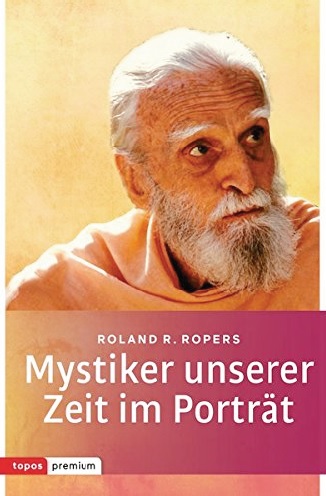
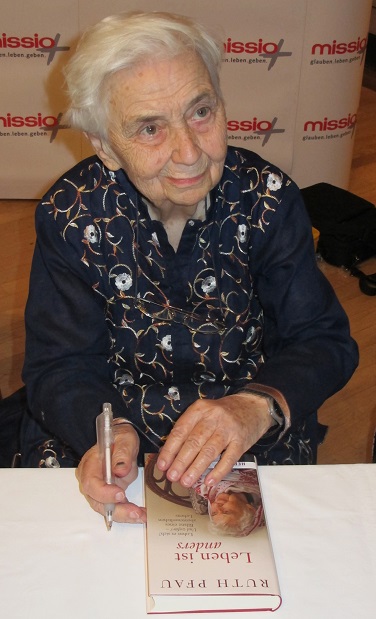
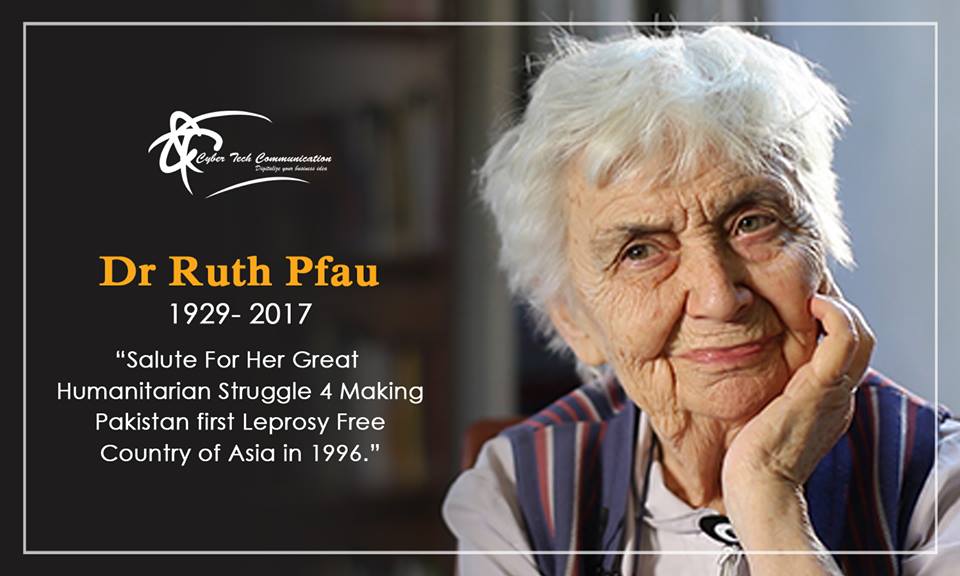
Please note that the fragments below are protected by copyright laws and cannot be copied or reproduced, except by naming the author and the original place of publishing (the Oblates page).
Pilgrim in India (novel)
extracts from a novel by Savitri I. Mayer
Extract from the prologue
I was in India during 1983… and part of my experiences during that trip are in this novel.
All the information and teachings are faithful to the sources; the texts looked up and quoted appear in the bibliography: Sri Aurobindo, Sri Ramana Maharshi, Swami Vivekananda, Father Bede Griffiths, some Buddhist schools…, and a few more.
Father Mark is a character inspired by Father Bede Griffiths, in whose ashram I stayed some time and from whom I received diksha, beside the ashram cross and a new name.
I doubted a lot about either putting Father Bede as a character and portray him faithfully in the novel, or create a fictional character. Finally I chose the second option because it gave me more freedom and I could create a character that, even if very similar to Father Griffiths, is nontheless a fictional character, mainly in some anecdotes and dialogues exclusive to the fiction and to the character, Father Mark. But Father Mark’s teachings are Father Bede’s teachings and are taken from his books (which I mention in the bibliography) and also a little from my memories. Father Mark’s ashram (Satyavanam) is also inspired by Father Bede’s ashram: I describe the spaces, the rhythm and the activities of the fictional ashram as they were and as I experienced them in Shantivanam during the time I spent there.
Extract from chapter 5
The trip to Satyavanam
After the second visit to …., I thought the moment to meet Father Mark had arrived. Earlier it would have not been right, because it was a Christian ashram and it was during Easter. But now I assumed there would be place, so I sent a brief letter announcing my arrival (as I had been advised to do) and one night I took a bus directly to Tiruchirapalli, the nearest town to the ashram.
……………………
I took a taxi and after a pretty long journey arrived at the ashram. The entrance was an arcade painted in pink, with some sculptures on it. These were sitting figures, with the style and the colours of the Hindu murtis, but it seemed to me that they represented Christian saints.
I went inside and walked on a path lined with palm trees till I arrived at the reception office, where the manager, an Indian man of middle age, received me with great consideration. They had received my letter and so I was expected and a room was prepared for me. This room was small and simple but comfortable. A bed, a wooden plank hanging from the wall as a table and a chair, besides a pair of shelves for the clothes. That room and a few others were part of a modest building with roof in straw, and all the rooms opened to a corridor which was by a garden. It was possible to see many trees and plants, and just in front of my room there was a thick shrub with orange flowers that gave a mild scent.
The manager gave me a piece of paper with the timetable of activities and said he would come later to take me to Father Mark´s hut.
I hurried up… I put my things on the shelves and had a shower in the bathroom, which was at the end of the corridor and was a tiny wooden space as modest as all the rest. I had taken a shower in the morning, in the hotel, but because of the heat I had perspired and wanted to be impeccable for the meeting with the father. I dressed modestly: a pair of trousers and a kurta.
I was restless, intrigued… My friend had spoken about the father with such great admiration: Would I feel the same?
First meeting with Father Mark
I was nearly dressed when I heard a soft knock on the door. I opened it and saw the manager:
—I can now take you to meet the father —he said, with such a firmness that to postpone this was impossible.
I asked him to wait some seconds… My hair was wet, which may not have been appropriate and so I took my white shawl and covered my head with it.
We had to walk on a long path…, till the manager stopped near a humble little hut with roof in straw, saying:
—This is the father´s hut.
It was a very simple dwelling, with a door, a window, a little garden in the front and very high trees —palms, coconuts and banana trees— that gave shadow to the garden.
Behind the opened window I saw the figure of an aged man. He was dressed in a saffron gown, his arms and one shoulder naked, and he seemed to be writing, sitting at a table by the window.
We waited silently… and some minutes went by, till the father raised his head and saw us, greeting us with a smile and a gesture.
The manager, going ahead and with a slight head inclination, told the father that I came from Argentina and after some exchange of words he left.
And the father, with a gesture and a namaste, invited me to go near him…
While I was walking towards him, his face was becoming more distinct.
I saw the light of his clear eyes. And his smile. He had a thick white beard, long white hair, and blue eyes very bright. He seemed the image of purity.
Immediately, I perceived something immensely loving coming from him, something ineffable.
Then… all my thoughts ceased.
I felt warm in my chest…, in my cheeks. And was invaded by a feeling of love so strong and sudden and incomprehensible. A feeling of love very pure…, different to other kinds of love I had experienced till then.
I stayed motionless in front of his window, while he looked at me smiling and asking questions…
I answered as I could, because that inexplicable love was paralysing me.
—My name is Moira…, I am from Buenos Aires…, I knew about Satyavanam
through a Spanish friend.
And babbling I said the name of my friend, whom the father immediately remembered.
Afterwards, I stayed looking at him with delight… And he went on talking, in a concise and formal way, while I expressed myself in a monosyllabic way. He asked me if my room was comfortable and how long I wished to stay. He said that there were group meetings in the mornings and the afternoons, to share a coffee with milk (milk from the ashram´s cows). And said that if I needed to talk with him privately, I only had to go near his hut and wait till he called me.
I was then conscious of two realities at the same time.
On one side that old humble monk, who was concerned with my comfort and who was speaking in a very British English about such ordinary things as my room and the ashram routine.
On the other side, that loving and amazing energy, that seemed to come from him and surrounded me, halting my thoughts and making me nearly weep.
What I was feeling was bewildering…
Finally, the father dismissed me doing a namaste, which I gave back in the same way, and overflowing with love I went back to my room.
In a while, the father would give a discourse. That time waiting seemed to me endless: I wanted to listen to the father, to meet the people staying there, to share the activities…
His first discourse
The discourse was given in a circular space, without walls, with a wooden ceiling supported by trunks. In the center there was a curious sculpture: four identical figures of Jesus Christ facing the four cardinal points. They were sitting in meditation posture, with their hands on the knees doing a mudra, and the marble of the four Christs was black.
When I arrived some people were there already, sitting on the floor on cushions or rugs. After a while the father came. His body was like a reed, tall and thin, slightly bent forward, and the saffron robe, the kavi, reached to his feet, which were discalced. He was carrying some books and handwritten papers and placed himself on the floor, facing us, on a little straw carpet.
—Today we shall begin a new subject —he said, putting on his reading glasses.
“I arrived at the right moment” I thought.
—We will read some of the Upanishads and from that reading, we will compare
Hinduism with Christianity… This is very important!
The father began to read…, and from time to time he stopped to comment, explaining what the Vedas and the Upanishads are. The Vedas are the oldest texts of Hinduism, transmitted initially by word of mouth, and were created by thinkers and poets from their inner experience. The Upanishads, the last Vedas´ texts, are the most philosophical, and convey a deep spiritual understanding.
When the father made comments, he took out his glasses and stared at us, attentive to our responses.
After a while he said:
The Hindu vision “It is this vision of a cosmic unity, in which man and nature are sustained by an all-pervading spirit, which the West needs to learn from the East.”
And he stressed that one of the more important messages from the Upanishads is that the Spirit can only be known through union with Him. And that this is possible because the Spirit, Brahman, is present in each one of us, it is Atman, our own being.
—The Self which dwells in the heart of every creature… It is smaller than the small, greater than the great, —he read.
I listened to him with great interest as did the other people: all quiet, sitting in front of him. Even if the father was explaining very intangible themes, he managed to capture our attention completely.
But from time to time, I looked around me with joy…
I felt so well!
Everything seemed to me beautiful and perfect. The evening sun radiating behind the father; the father, who also radiated; the four black Christs in their eternal meditation.
Everything was perfect!
Ruth, a soul friend
From that afternoon I began to share the activities in the ashram and my days slided through meditations, Masses and teachings, but also social life. There were two circumstances of intense communication that repeated every day, in the middle of the mornings and in the afternoons, when we met to have a coffee with milk. We did it in a round open space, which was surrounded by palm trees that gave shadow and by plants that gave scent.
There I began to meet people and to discover my affinity with them. And during one of the first mornings I met Ruth…
I was sitting on a trunk, drinking my coffee and pleased, watching the people, when a girl slightly overweight, with a kind face and nice smile, came near me. She was dressed with a white robe that reached her feet and her glance was frank and intelligent.
—Hi, your first time in Satyavanam? —she asked, with a very American English.
Immediately I knew that she was from California (where she was studying in an important university, in something related to education) and that this was her third time in India and in father Mark´s ashram.
—India is like a magnet for me, I come every time I can —she confessed, and then she told me in detail of her experience in India and in Satyavanam.
From the very first moment I liked Ruth very much. And this was reciprocal. We began to meet each other often and in few days we were intimates. As she used to say:
“We recognized each other as soul friends, as spiritual sisters”.
Ruth was profound, sincere and wise, with a bright intelligence that balanced her not much physical beauty. She had hair in opaque chestnut colour combed without style and she dressed with robes in rustic fabric that looked like sacs. These were special clothes for her sojourn in India and she herself made them.
Ruth practiced meditation for many years and the most important thing in life for her was the spiritual search.
……………………..
Everyday life in the ashram: living in paradise
The love for the teacher
The mystery of the energy, of the vibration that persons and places give off… In Satyavanam that mystery prevailed. It was like living in paradise…, or as we imagine paradise should be.
During those first weeks, the anxiety and the mood swings disappeared from my feelings. I got stabilized in a state of serenity, joy and harmony.
I was happy, and I was happy in a quiet way, without ups and downs.
And every time I came across the father, I felt that inexplicable love… It was so strange: a feeling of complete purity, full of respect and veneration.
—This is the love for the teacher —Ruth explained when I told her—. I feel the same for Father Mark. When I am here, what I long most is to see him or to listen to him, and besides that, to assist him.
It was reassuring to know that she felt the same as me.
There were two periods for meditation: one hour at dawn and one hour in the afternoon. During those times everyone would sit to meditate alone, in any place. But we were attuned with each other, as we were all doing the same. I liked, especially at dawn, to go to the river side, which was near the ashram. There I found room on a stone or against a trunk… The sun was just appearing, softly and tenderly, and my first thoughts were for God, to Whom I offered my meditation…
Om Sri Bhagavate
Satchitanandaya Namaha
(Let us greet the Lord, who is Being, Consciousness, Bliss)
Everybody gave some help in the ashram, which in my case was usually to peel and cut vegetables in the mornings. And a couple of times it was my turn for serving the meals…
The dining room was a big rectangular space, with the walls painted in smooth green.
We sat forming two facing rows, on the floor, with the exception of aged people, who were provided with chairs.
The father shared all the meals with us, sitting as everybody else on the floor, in the end of a row. And during the occasions I had to serve, was astonished at his frugality. I had just helped him with a serving of rice and vegetables, and already his hand made a gesture showing that it was enough.
The meals were also a delight for the soul. While in silence as we consumed the food, we listened to fragments of sacred texts read by some disciple. Then, the act of eating, so linked to body and matter, seemed infused with a sacred quality. The usual pleasure of the senses disappeared. We gave to our body the food it needed, but our attention was focused on something more essential, on something that nourished us spiritually.
There were three services every day and to attend them was glorious…
The chapel, painted in brick colour inside and outside, was as simple as all the other buildings in the ashram. In the style of many Hindu temples, it had the altar within a dark and half closed space, put on a level from which some stairs descended. The father seated himself in front of those stairs and the monks staying in the ashram and not only residents but also visitors sat on both sides.
Even being very simple, or maybe because of that, the chapel was very beautiful.
The images were trimmed with flower threads, the incense was burning on the altar and the Mass integrated in the rituals of the religions of the East and the West.
We all sat on the floor and once all were accommodated, the devotional chanting, the bhajans, would begin. The father and the monks leading them, while they were playing wind and percussion instruments. Father Mark played a small drum called kanjira with his hands.
And those chants were moving: the father in front of us with his kanjira and everybody singing, praying aloud…
Om Asato ma sadgamaya From the unreal lead me to the Real
Tamaso ma jyotirgamaya From darkness lead me to Light
Mrityor ma amritamgamaya From death lead me to Immortality
And when the father gave his sermon, his words moved me in a permanent way, not only for what he said but, and mainly, for how he said it. Never, in the few times that I had attended a Mass and listen to the priest, had I perceived such a power, such a conviction, such a truth. All in him was inspiring…
I remember phrases from his sermons, like that time when, with joined hands and shining glance, he said:
“Prayer and meditation are ways of going beyond appearances and touch Reality…
Meditation is a way of going beyond the ego and opening to the Spirit, letting Him transform us.”
Or that other time:
“The word God has infinite meanings and none is adequate… It points to Something that is beyond words and things.”
And he also seemed to go beyond words and things, nearly ethereal, luminous...
...............................................................................................................................................................................